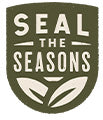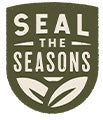What is a Planet Based Diet?

What is a Planet Based Diet?
Whether you are pescatarian, vegetarian, vegan, or enjoy a little bit of everything like we do, it is possible that you may have heard of “planet-based diets”. To be clear, I did not say “plant-based” diets—though I would not fault you for having misread that—and yes, I did say PLANET-based diets. If you are curious as to what a planet-based diet consists of, many common questions may come to mind: Why should one consider a planet-based diet? What does a planet-based diet look like? Are you already on a planet-based diet? And finally, what would be the challenges of incorporating one into your daily life?
The first part of understanding the importance of planet-based diets means discussing how our access to healthy food, or even enough food in general, does not always correspond to the greatest environmental outcomes.
Over the past century, our food system has found ways to produce enough food to feed the planet. Unfortunately, at least 50% of that food is being developed at the planet’s expense. This arrives in the form of land mismanagement, improper chemical application, and livestock overcrowding. Many key current environmental issues of today, are the results of those activities. These include more drastic changes in our climate, increases in food and health insecurity, loss of biodiversity, pandemics, and the associated economic impacts. The goal of incorporating sustainability into a diet, thus, is to reduce current and potential impacts to our food system. While sustainable agriculture addresses some of the complexities of what we use to grow our food, and how we grow it, sustainability is also applicable to our dietary choices—whether they are ones we make intentionally, or as the result of certain lifestyle demands and habits.
The concept of the planet-based diet was first formally introduced by the World Wildlife Foundation in late 2020 as part of an effort to promote food consumption patterns that are high on nutrition while being low on environmental impact. Billed as a “win-win for people and nature,” the main goals of planet-based diets are to:
(1) Reverse loss of biodiversity
(2) Feed humanity on existing cropland
(3) Optimize crop yields
(4) Achieve negative carbon emissions
(5) Produce societies that live within the global carbon budget for food
The idea for this diet is driven by a central theme: That major impacts on the food system can be mitigated, or completely addressed, through simple dietary shifts in local eating habits—which would help with the conservation of nature, and aid in its restoration.
What would a planet-based diet look like? And are you already on one?
For some, it is easy to think of a diet that is based around environmental sustainability and limited resource use as being potentially unenjoyable in its real-world applications. But the beauty of planet-based eating is that it typically is reflective of many popular local cultures and community dishes, meaning we can still incorporate many of the things that we traditionally enjoy in our day-to-day meals. Eating locally farmed produce and locally produced foods, especially those concentrated on vegetables, fruits, and grains, is a key component of planet-based diets.
Most crucially, however, we can safely make the generalization that most planet-based diets around the world would also be plant-based diets in their core makeup. Yes, you heard me correctly: Most planet-based diets would be plant-based diets, which can—to a degree—make regionalizing dietary patterns a bit easier. Additionally, increasing the propensity of plant-based dietary habits in society reduces the amount of livestock that needs to be raised, which reduces resource burden—as livestock increases the overall amount of land and water required to produce meals.
For the meat lovers out there, understand that when focused on planet-based eating, “less meat” is not the same as “no meat.” Plant-based diets, particularly when assessed through the lens of planet-based diets, are not vegetarianism or veganism. They are more about dietary patterns that are majority plant-based, relying on 60%+ foods based on grains and vegetables, and less than 40% based on animal products. Based on this flexible definition, there is plenty of room for some societies to continue eating meats while on a planet-based diet.
Concerning whether you are already on a planet-based diet, that is a little bit harder to determine because the planet-based diet varies from region to region. For instance, while logic would suggest that being a vegetarian or vegan, would correspond to the least amount of planet resource burden—that only may be the case in certain regions of the world. Take Brazil as an example. While a shift to healthier dietary habits and more plant-based eating would correspond to a 50% lower rate of biodiversity loss in Brazil, it would also correspond to a 91% increase in biodiversity loss in Indonesia. This is to say that while embracing vegetarian, or vegan, eating patterns may seem like a planet-based dietary position by default, it may very well mean disastrous environmental implications for societies half a world away. Thus, identifying what is and isn’t in line with your region’s planet-based diet may be slightly more complex than one might anticipate, and the likeliness of you already being on one is fairly low—even if you have incredible dietary habits by almost every conventional measure.

Can this save the world?
I think that when some hear buzzy new terms within the sustainable agriculture and healthy living space, the same general question tends to arise: Could something like the planet-based diet actually play a significant role in saving the world from a climate disaster? Taking into consideration that the largest producers of greenhouse gasses are fossil fuels and industrial meat production, the answer is quite possibly yes—or at least, it could play a hand in mitigating and slowing the spread of climate change. As mentioned above, meat production and livestock grazing require more land than fruits & vegetables—significantly more, in fact. Some studies have shown that it can take up to 10 pounds of grain to produce one pound of meat and that while there are 56 million acres devoted to raising cattle nationwide, only 4 million acres are devoted to farming vegetables and produce. By societies changing over to plant-based diets, this would reduce the overall reliance on land to feed people, as well as the amount of pollution and GHG emissions produced as a result. In fact, the World Wildlife Foundation claims that adopting a planet-based diet can reduce:
But as optimistic as the WWF’s planet-based diet is, it is not immune to one’s individual sense of self-discipline—or lack thereof—when forming their diet. The reality is that for an idea as ambitious as the planet-based diet to become mainstream and have measurable ecological effects, many humans would have to transition some of their dietary choices—and it can be difficult to change lifestyle habits. Keep in mind, however, that the latter observation is not meant to throw cold water on the planet-based diet as an idea—it is just meant to indicate that the planet-based diet has some significant obstacles that it will have to face in order to succeed.
Ultimately, I think this is why the product we offer at Seal the Seasons via our network of local family farms is so important: because it does fulfill the requirements of the planet-based diet. Don’t believe us? Our locally sourced fruits and vegetables are:
The reality is that products like the ones offered by Seal the Seasons make it easier for people to incorporate a planet-based diet into their lifestyle. Instead of making the process of going plant-based esoteric and unenjoyable, we offer something that is healthy, high-quality, tasty and conveniently available where you do most of your shopping — in your favorite grocery store (either online or in-store).
Outside of the individual agency required to make the planet-based diet successful & impactful, there is another component that is critical to planet-based diet adoption: the legislative part. Ultimately, certain aspects of the WWF’s plan cannot be effectively implemented without some kind of legislative measure making a planet-based food economy a top priority going into the near future. According to the WWF, policymakers can support the production of food that protects and conserves biodiversity, and sustainably uses natural resources. This can be manifest in food production techniques that:
Additionally, it requires policy measures that support the equitable sharing of the costs and benefits associated with transitioning different societies to planet-based diets.
Ultimately, while planet-based diets could play a hand in saving the world so to speak, it isn’t without everybody doing their part to make sure that it can happen—including those who craft policy around these types of initiatives. Nonetheless, however, it does not require a politician for you to do your part as an individual today. For those of you interested in more information about planet-based diets, as well as the WWF’s pretty cool planet-based diet builder tool, be sure to check out the WWF’s Planet Based Diet whitepaper page. Finally, for those of you interested in finding some of Seal the Seasons’ locally sourced produce in a store near you, be sure to check out our ‘Where to Buy’ section of the website.






